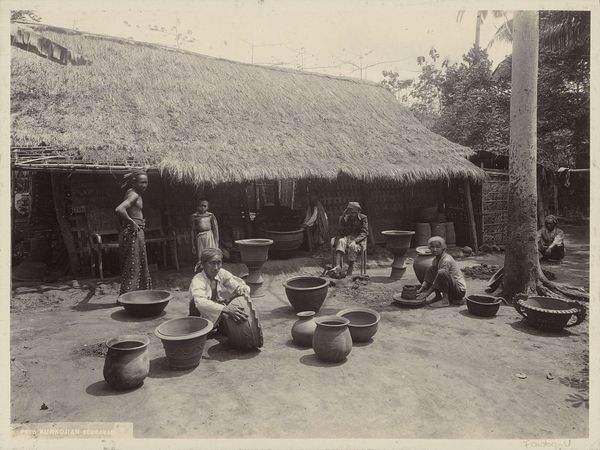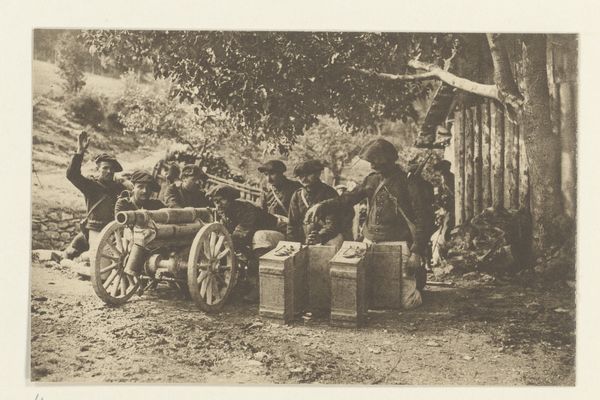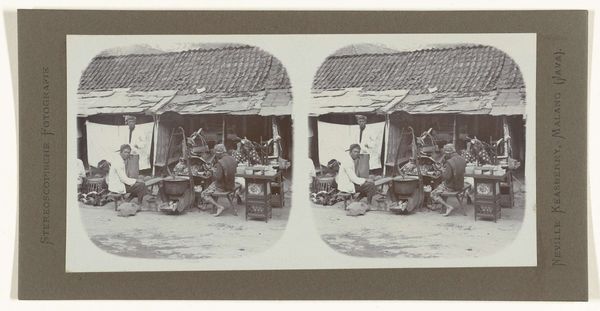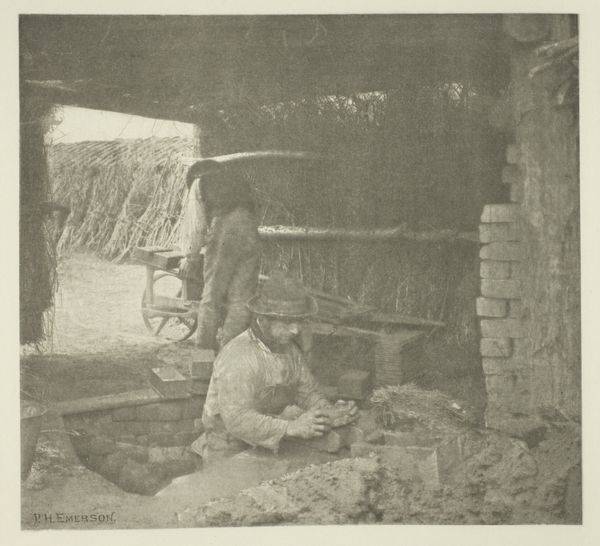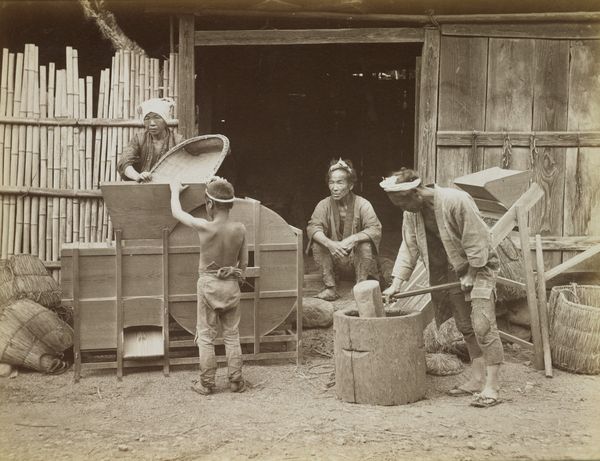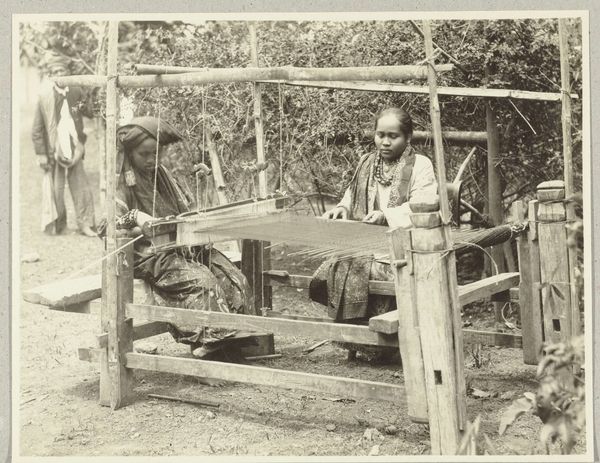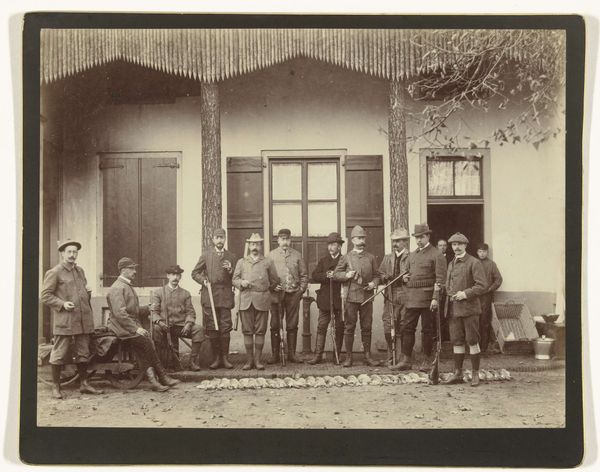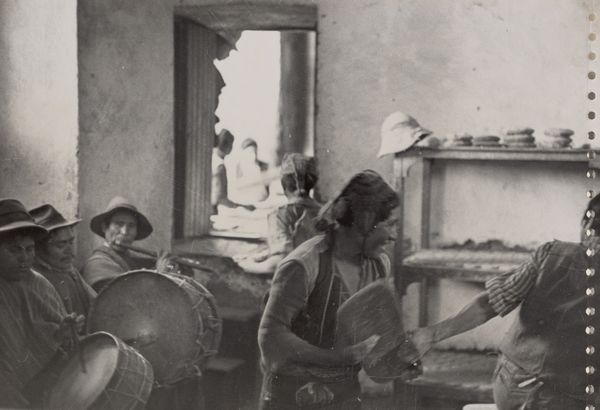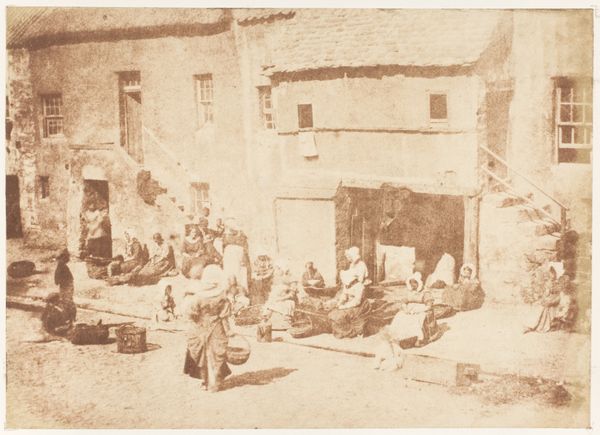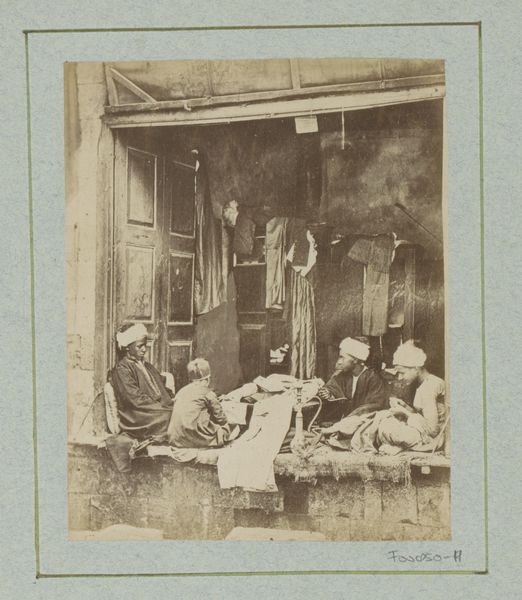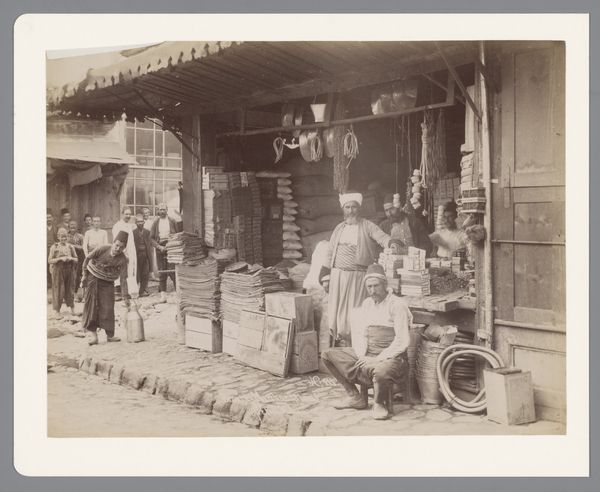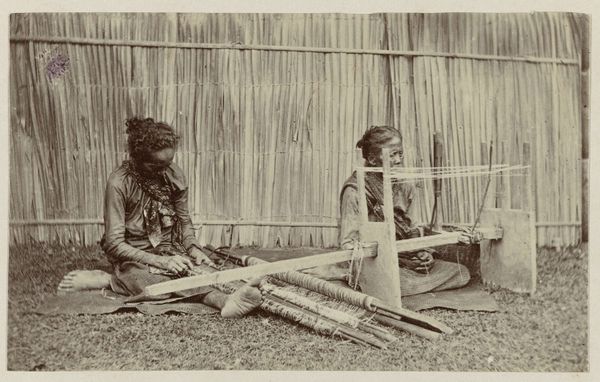
print, photography, gelatin-silver-print
#
portrait
#
print photography
#
16_19th-century
# print
#
asian-art
#
landscape
#
outdoor photo
#
archive photography
#
photography
#
historical photography
#
gelatin-silver-print
#
genre-painting
Dimensions: 21.3 × 29.5 cm (image); 34.7 × 47.1 cm (album page)
Copyright: Public Domain
Editor: Okay, next up we have John Thomson's "Tea-Picking in Canton," a gelatin silver print from around 1868. There's something so somber and dignified in the posture of these women sorting tea. What's your interpretation of this photograph? Curator: This photograph is so much more than a simple documentation of labor. It invites us to consider the complex interplay of colonialism, trade, and representation in 19th-century China. Thomson's work, while seemingly objective, was shaped by his Western perspective and the power dynamics of the time. Look closely at how the women are arranged, almost like specimens on display. Editor: That's a really interesting point. I hadn't considered that objectifying gaze. I was more focused on the stoicism in their faces. Curator: And what do you think that stoicism conveys? Consider the global demand for tea at that time, and the often-exploitative labor practices used to meet that demand. This image, in my view, hints at the burden placed upon these workers, their identities somewhat obscured by the uniformity imposed upon them. Also, who do you think was the target audience when Thomson made this photograph? Editor: It must have been people back home in England who were consuming the tea these women are sorting! Curator: Precisely. It's a crucial point to remember: Thomson wasn't simply capturing a scene, he was producing an image for a specific audience, one that was deeply implicated in the realities of colonial trade and resource extraction. The image becomes a commodity in itself. What does it mean to profit twice from it? Editor: Wow, I didn't expect to go this deep! It really makes you think about whose stories get told, and how. I'll definitely look at photographs differently now. Curator: Indeed. Engaging with art requires that we interrogate its historical, social, and political contexts and continue asking questions.
Comments
No comments
Be the first to comment and join the conversation on the ultimate creative platform.
